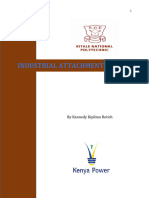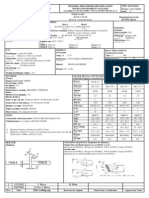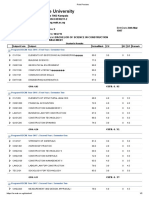0% found this document useful (0 votes)
52 views35 pagesEdited From Slides For Operating System Concepts by Silberschatz, Galvin, Gagne
This document discusses memory management techniques using segmentation and virtual memory. It describes how segmentation divides memory into logical segments and uses segment tables to map logical to physical addresses. Virtual memory allows programs to have an address space larger than physical memory using demand paging, where pages are swapped in and out of memory as needed. Page replacement algorithms like FIFO, optimal, LRU, reference bit, and second chance are discussed for selecting pages to replace when new pages are needed in memory.
Uploaded by
ebin josephCopyright
© © All Rights Reserved
We take content rights seriously. If you suspect this is your content, claim it here.
Available Formats
Download as PDF, TXT or read online on Scribd
0% found this document useful (0 votes)
52 views35 pagesEdited From Slides For Operating System Concepts by Silberschatz, Galvin, Gagne
This document discusses memory management techniques using segmentation and virtual memory. It describes how segmentation divides memory into logical segments and uses segment tables to map logical to physical addresses. Virtual memory allows programs to have an address space larger than physical memory using demand paging, where pages are swapped in and out of memory as needed. Page replacement algorithms like FIFO, optimal, LRU, reference bit, and second chance are discussed for selecting pages to replace when new pages are needed in memory.
Uploaded by
ebin josephCopyright
© © All Rights Reserved
We take content rights seriously. If you suspect this is your content, claim it here.
Available Formats
Download as PDF, TXT or read online on Scribd
/ 35




















































































